

Myopic incidence is increasing year by year in the global scope, astigmatism also has a very high incidence, more than 0.75DC astigmatism population accounted for about 30%~45% of the myopia population, if not corrected in time will seriously harm people's visual health. However, the number of people wearing astigmatic contact lenses in China is only 2%, which is still far behind the level of international astigmatic contact lenses.
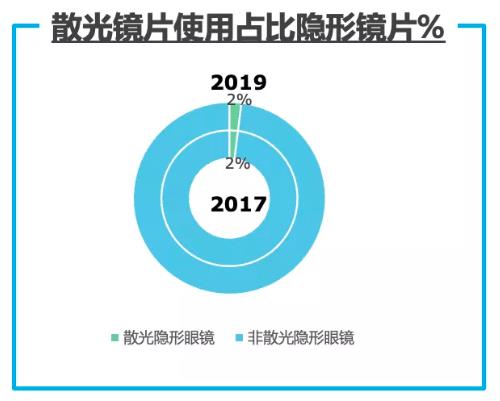
Why does domestic astigmatism contact lens check match rate low?
Here's the confusion from many eyewear retailers:

In fact, consumers' cognition of astigmatism is far from enough. They do not know what astigmatism is and they do not know that astigmatism can be corrected by contact lenses, so they do not pay attention to astigmatism. This is the root cause of the low matching rate of astigmatic contact lenses.
Therefore, in order to improve the test matching rate of astigmatism contact lenses, we should not only improve the test matching skills, but also educate consumers through various channels and resources to let them know the problems caused by astigmatism and the importance of correcting astigmatism.
Four steps learn to match astigmatism soft lens
In 2018, Dr. Aaron and contact lens safety monitoring and visual health professional committee (hereinafter referred to as safety will be) produced in the soft contact lens safety monitoring initiative, soft contact lens fitting and use specification, puts forward the corresponding standards and requirements, summed up the health to wear contact lenses four steps: accurate optometry, care and regular glasses and code review. Astigmatism soft lens matching is the same as other soft lenses, the same need to follow the contact lens health matching four steps.
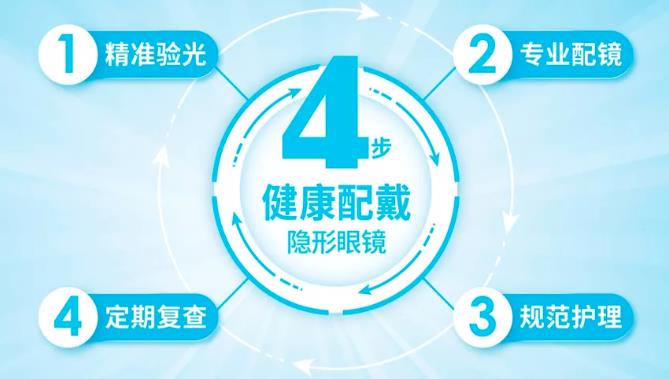

It is generally divided into three stages:
Initial stage: through the conversation with the wearer, find out the eyesight problems of consumers, whether there are blurred vision, double vision, dry eyes, dizziness and headache and other visual fatigue symptoms, and understand the visual needs of consumers and the habit of wearing glasses. Then, objective optometry examination was carried out with computer optometer or mirror to preliminatively understand the refractive status of wearers.
Precision stage: More accurate examination with integrated optometry is the most critical stage in the optometry process. If it is found that the wearer has astigmatism, optometrists should let consumers identify astigmatism symptoms, emphasize the harm of astigmatism and the importance of correcting astigmatism, and demonstrate the impact of astigmatism on vision (visual effect of uncorrected astigmatism, visual effect of fully corrected astigmatism, visual effect of ball column correction). At the same time, the sensitivity of the wearer to the axial fine-tuning should be paid attention to to estimate the success rate of astigmatism contact lens fitting.
Final stage: After determining the accurate luminosity of single eye, further professional examinations such as binocular balance, presbyopia, stereovision and binocular vision function should be carried out. Finally, the best prescription for glasses should be obtained by trial wearing.
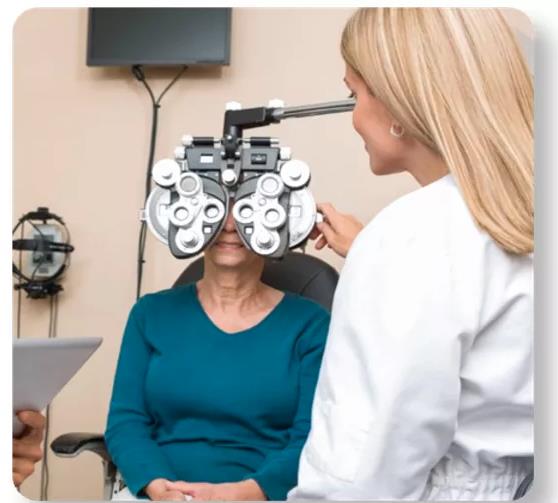

We suggest that consumers should go to the professional qualified inspection agencies, under the guidance of professional personnel, through professional equipment, such as slit lamp, in strict accordance with the professional inspection process of contact lenses, and buy qualified professional products certified by the National Medical Products Administration.
For practitioners, wearers screening, lens fitting evaluation and wearers safety education are also very important.
Wearers screening:
When choosing soft contact lenses to correct vision, safety, effectiveness and comfort should be considered. Therefore, in order to ensure safety, the pharmacist should use slit lamp to check the wearer's eye health, grasp the indications and contraindications of contact lenses; In order to ensure visual quality, it should be clear that people with astigmatism above 0.75DC should wear contact lenses. At the same time, considering the wearing comfort and durability, but also consider the comprehensive performance of contact lens material and design, for consumers to choose the most suitable astigmatism products.
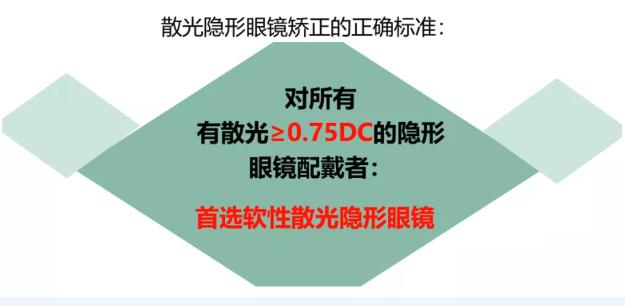
Lens fitting evaluation:
Bausch & Lomb astigmatism soft lens test success rate is up to 97%, can take direct order lens method. Astigmatism contact lenses must be tested and fit evaluated before they are delivered to the wearer. The fitting evaluation generally starts 15 minutes after wearing the lens, and includes the same conventional indicators as the fitting evaluation of spherical soft lens, such as center positioning, coverage, mobility, subjective sensation, corrected vision, etc. Besides, the stability of astigmatism soft lens axial position should also be evaluated to observe whether there is axial rotation.
We can observe whether the astigmatism lens rotates in the eye by observing the positioning mark on the lens. If there is axial rotation, accurately determine the amount and direction of lens rotation in the eye, and then follow the principle of "plus plus minus" or "plus plus right minus" for axial adjustment.

Safety education for wearers:
The education of the wearer is an important part of the fitting procedure. According to statistics, lack of knowledge and poor compliance of wearers are the primary factors leading to complications. Therefore, the wearer's education should be completed when the wearer first wears:
Before dispensing glasses (or replacing lenses), you should go to the regular optician shop or hospital for an experienced doctor to do eye examination and optometry, and choose the contact lens suitable for you according to the examination results combined with your personal needs.
When making up, should wear the mirror before making up, take off the mirror after removing makeup, do not contact cosmetics and hair gel and other chemicals with the lens.
Avoid wearing them in the workplace where volatile chemicals are present

It mainly embodies from two aspects: correct picking and wearing of lens and correct nursing of lens
Correct lens removal:
Keep your nails short to avoid scratching your eyes and lenses.
Clean hands with running water and neutral detergent, and then dry them with non-floc paper towels or dryer.
Place the lens on the tip of your index finger and observe the lens. The lens is front if the edges of the lens are "bowl-shaped" and back if the edges are "saucer-shaped".
Wearing lenses: the middle fingers of both hands open the upper and lower eyelids, eyes look down, wear lenses.
Pick up the lens: look up slightly, pull the upper and lower eyelids with the middle fingers of both hands, and gently pick up the lens with the index finger and thumb. Avoid excessive force to prevent lens adhesion
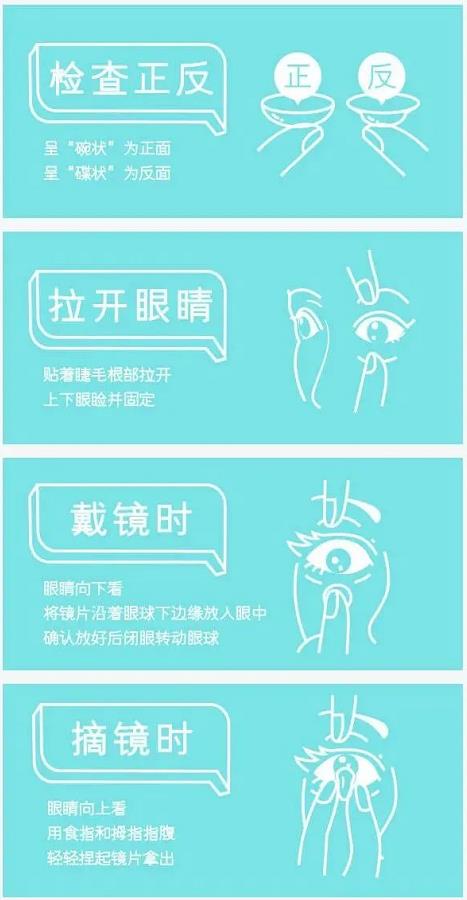
Notes for lens care:
The mirror box should be rinsed and cleaned every day and replaced regularly every month
Don't mix different brands and types of solutions
Do not soak lenses in saline or distilled water
Solution and lens case should be kept in a clean and dry environment
Do not use any eye drops other than moisturizer while wearing
The care solution in the lens box is used for daily immersion disinfection and storage of lenses. It needs to be replaced every day and cannot be reused

The successful delivery of contact lenses to the optician does not mean the end of healthcare services, but rather the continuation and enhancement of services. The time and method of regular review should be strictly stipulated. The wearer should have a review every six months after wearing the mirror 1 week, 1 month, 3 months, and then take off the mirror immediately if he/she has symptoms. Regular inspection items include listening to the wearer's complaints, method of wearing glasses, time, vision, slit lamp eye table examination, tear test, contact lens fitting status, whether the lens is damaged, contaminated, precipitation, etc. If there is a problem, solve it in time.
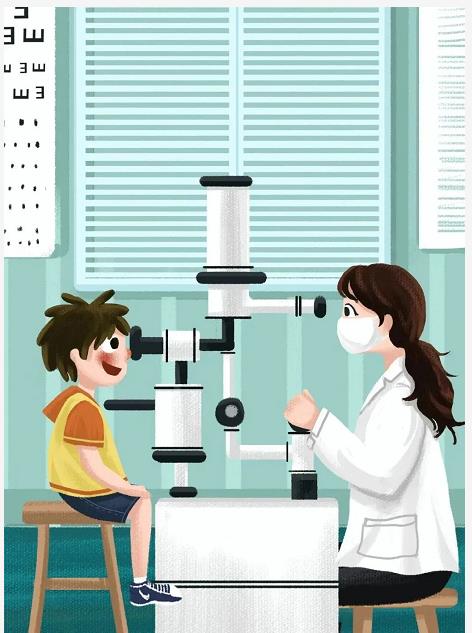
The above is astigmatism soft mirror test with four steps:
Accurate optometry, professional glasses, standardized nursing and regular review,
Did you get it?
The technician plays a pivotal role in the verification and matching of astigmatism soft lens. Mastering the verification and matching technology of astigmatism soft lens can not only improve the success rate of lens matching, but also provide the wearers with excellent wearing experience and clear and stable vision and comfort all day long. It is our bounden duty to bring light and health to every wearer and help them improve the quality of vision and life.